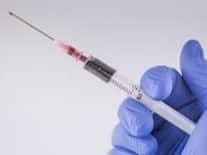The first necessary step that must be taken in order to know the meaning of the term hemogram is to discover its etymological origin. In this case, we have to emphasize that it is a word that derives from Greek. Exactly, it must be stated that it is the result of the sum of two lexical components of said language:
-The noun “hema”, which is synonymous with “blood”.
-The word “grama”, which can be translated as “written” or “recorded”.
A blood count is a diagram that represents the composition of blood . It is a chart, table or graph that expresses the quantities and proportions of the various blood elements.
 Also called a complete blood count or complete blood count , the blood count reveals hematocrit and the amount of hemoglobin, erythrocytes, and platelets, among other data. It also indicates the concentration of hemoglobin per red blood cell and the average size of red blood cells, for example.
Also called a complete blood count or complete blood count , the blood count reveals hematocrit and the amount of hemoglobin, erythrocytes, and platelets, among other data. It also indicates the concentration of hemoglobin per red blood cell and the average size of red blood cells, for example.
To perform the hemogram it is necessary to obtain a blood sample . The extraction is performed by inserting a needle into the arm, an action that allows a small amount of blood to be collected which is then analyzed in a laboratory .
There is no need to prepare in any special way for extraction. The person may feel slight pain from the needle prick and then a hematoma may develop in the area, but major complications are not common.
To carry out this blood test, the health professional who will draw the blood will proceed to clean the area of the arm where the needle will be inserted and then, around it, he will place a rubber band to press on the arm, as this will cause the veins to swell. of blood in that place.
Next, he or she will insert the needle into a vein and use the syringe to draw the necessary blood. This sample will then be placed in a bottle and labeled with the patient's personal data. Next, the needle will be removed from your arm, the rubber will be removed and a little cotton or a band-aid will be placed in the area of the puncture to prevent blood from continuing to flow there.
In just a few minutes, the blood can be drawn from the patient, who will be able to go home without any problem. Of course, there are people who are very apprehensive and can get dizzy, so not only will their blood be drawn while they are lying on a stretcher but, in addition, after finishing the extraction they will have to remain on it for a few minutes.
The blood count is used to detect or monitor multiple conditions. A doctor may request it to carry out a routine check-up, analyze how a treatment is progressing, observe the effects of a chronic disorder, or diagnose an illness .
The values of a blood count are considered normal within certain parameters. When the figures fall outside this average, they can reveal different health problems. A high level of hemoglobin, for example, can be linked to kidney disease, while a low number of red blood cells may be a sign of a problem in the bone marrow. Of course, a doctor must be the one who interprets the blood count so that, by studying it in its context along with other data, it helps you make a diagnosis.
